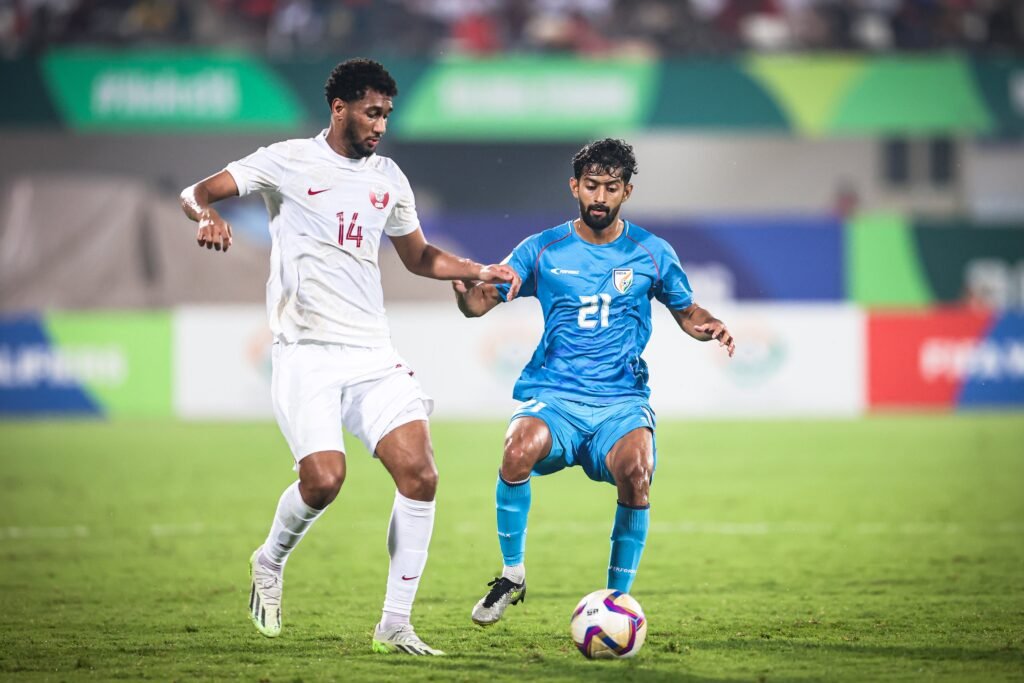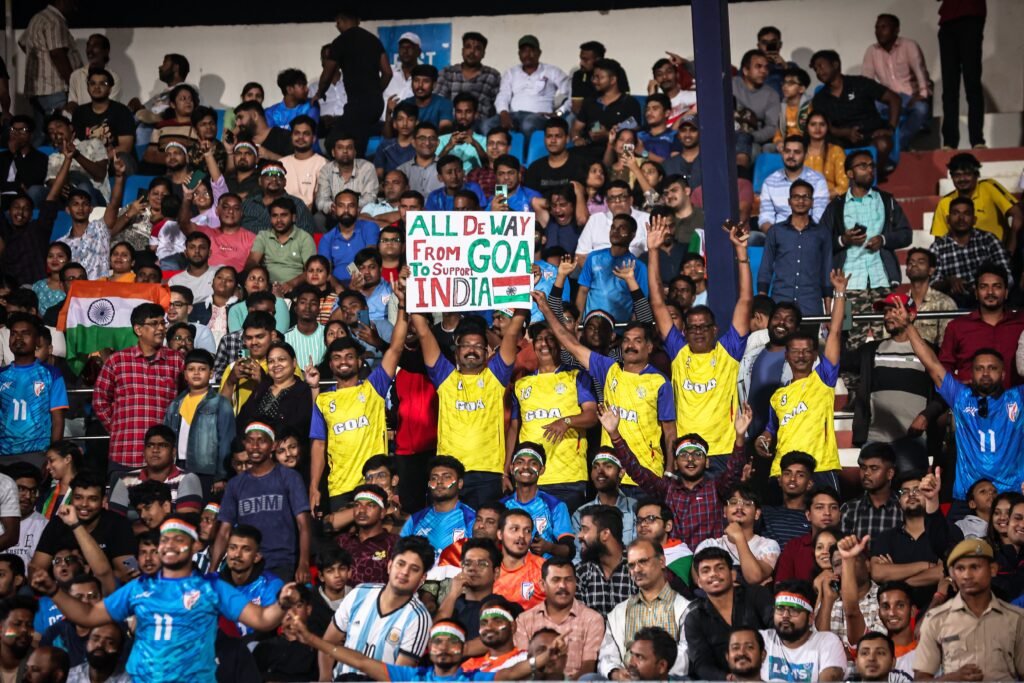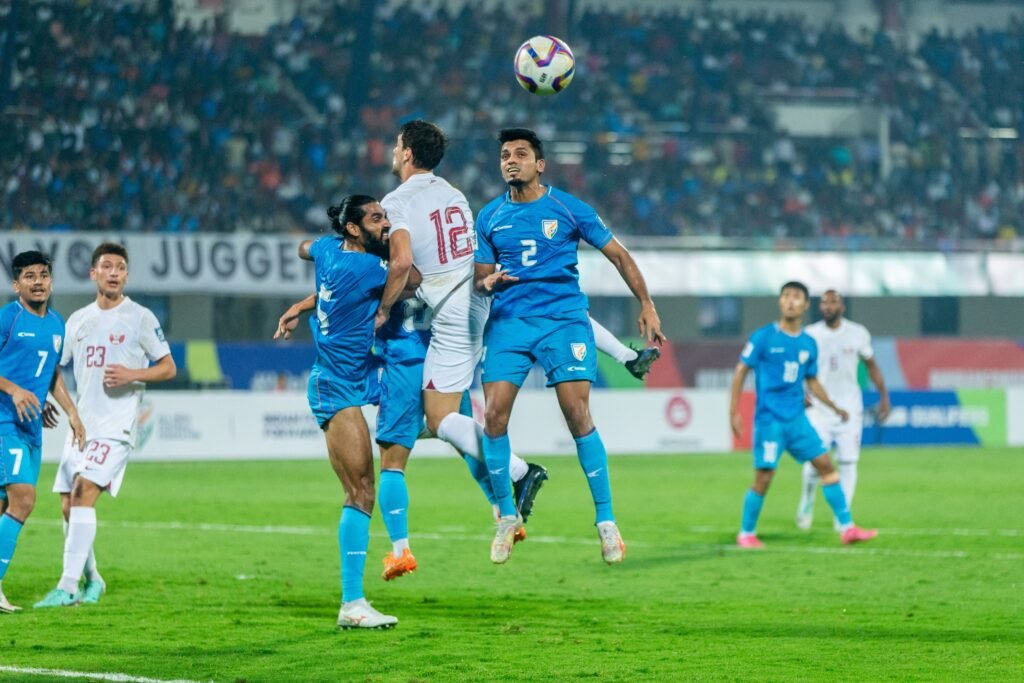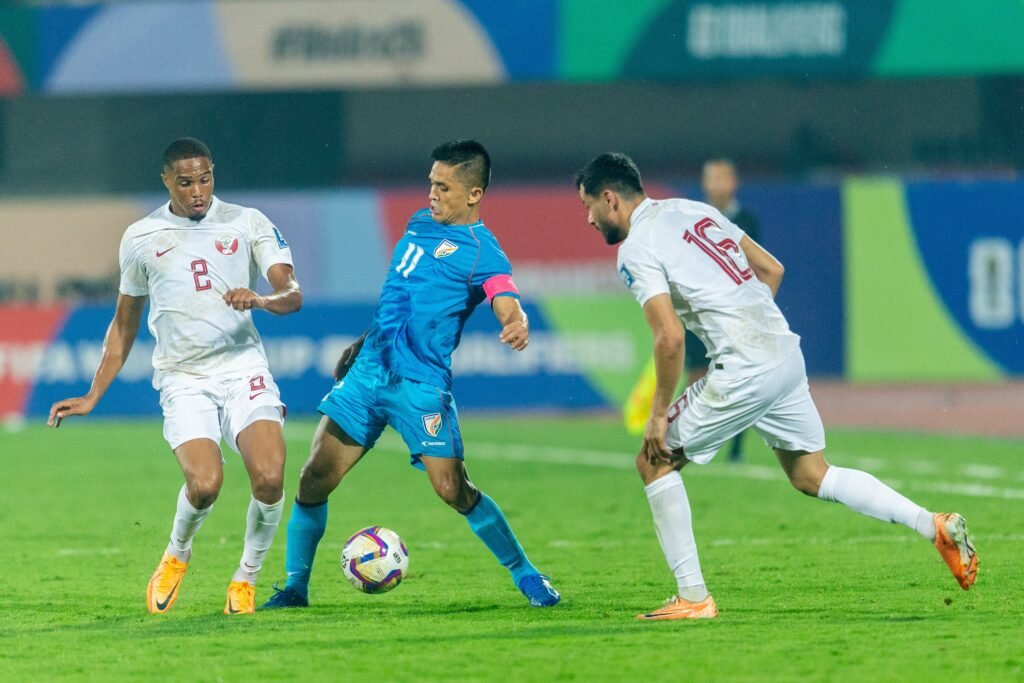Positives from India vs. Qatar Match
India faced a challenging encounter against Qatar in the FIFA World Cup qualifiers, ultimately losing 3-0. Despite the defeat, there were several positive aspects that provide optimism for the team’s future. Let’s delve into the key positive takeaways from the match:

Read More: WWE SURVIVOR SERIES 2023: ALL YOU NEED TO KNOW ABOUT THE UPCOMING SPECTACLE
1. Defensive Resilience
India showcased commendable defensive resilience throughout the match. Despite facing a relentless attacking force from Qatar, the Indian backline, led by the goalkeeper, displayed discipline and determination. The defenders managed to thwart numerous attacking moves, denying Qatar clear goal-scoring opportunities.
2. Individual Performances
Certain individual performances stood out, indicating the depth of talent within the Indian squad. Anirudh Thapa and Subhashish Bose, in particular, demonstrated their capabilities on the field. Thapa’s contributions in midfield and Bose’s defensive prowess highlight the potential for individual brilliance within the team.
3. Midfield Creativity
The midfield showed glimpses of creativity, especially through Anirudh Thapa’s involvement in the team’s build-up play. Maintaining possession and creating opportunities in the middle of the park is a positive sign for India’s attacking prospects. Enhancing this aspect could contribute significantly to the team’s overall gameplay.

4. Coach’s Strategic Decisions
The coach’s strategic decisions, including the inclusion of Subhashish Bose and Anirudh Thapa in the starting lineup, demonstrated a proactive approach. Adapting the squad based on the opponent’s strengths is a crucial aspect of successful coaching. These decisions indicate a willingness to experiment and find the optimal lineup for different challenges.
5. Fan Support and Social Media Presence
Despite the defeat, the unwavering support from fans is a testament to the positive fan culture surrounding Indian football. The appeal to stand by the players and coach received a positive response, showcasing a strong and supportive fan base. The team can draw inspiration from this support as they move forward.
6. Learning Opportunities for Young Players
Matches against top-tier opponents like Qatar provide invaluable learning experiences for young talents in the squad. Exposure to high-intensity games against formidable opponents contributes significantly to the overall development of the team’s younger members. These experiences will prove vital in shaping the future of Indian football.

7. Resilience Against Higher-Ranked Team
Facing the Asian champions and a higher-ranked team like Qatar presented a challenging scenario for India. The team’s resilience in enduring the challenges posed by such formidable opponents is a positive sign. These experiences will contribute to the team’s growth and mental strength in future competitions.
Coach’s Decisions Backfire in 0-3 Defeat to Qatar
India’s coach Igor Stimac made strategic decisions that resulted in a 0-3 defeat to defending Asian champions Qatar. This loss marked the end of India’s impressive 15-game unbeaten run at home. Let’s analyze the key factors that contributed to this setback.
Benching Gurpreet Singh Sandhu: A Puzzling Move
Coach Stimac’s decision to bench Gurpreet Singh Sandhu, a standout performer in previous encounters with the 2022 World Cup hosts, raised eyebrows. Gurpreet, the goalkeeper, had been instrumental in India’s past performances against Qatar. This move left fans and pundits questioning the rationale behind such a crucial decision.

Four Changes in Outfield Players: Lack of Coordination
Stimac’s boldness extended to making four changes among the outfield players from the team that secured a 1-0 victory against Kuwait in the opening game of the campaign. Unfortunately, these changes disrupted the coordination within the team, especially in defensive maneuvers. The lack of synergy among the outfield players proved costly against Qatar’s taller, stronger, and more synchronized opponents.
Missed Chances: Potential for a More Humiliating Scoreline
Despite the 0-3 scoreline, Stimac acknowledges that the defeat could have been more humiliating if Qatar had capitalized on half of the chances they created. This emphasizes the missed opportunities by the opponents and leaves room for India to reflect on defensive lapses.
Preparatory Game for AFC Asian Cup: Defensive Shaky from the Start
The match against Qatar was not just a World Cup qualifier for India; it served as a tough preparatory game ahead of the AFC Asian Cup in January. Stimac aimed to showcase India’s attacking flair and solid defense. However, the decision to replace Gurpreet with Amrinder Singh led to a shaky defense, notably demonstrated by Sandesh Jhingan. Amrinder’s struggles with ball possession further heightened defensive vulnerabilities.

Chaotic Defending and Early Concessions: Qatar’s Dominance
Qatar, coming off an 8-1 victory over Afghanistan, took advantage of India’s chaotic defending. Mostafa Meshaal capitalized on Udanta Singh’s failed clearance, slotting the ball into the bottom corner. Qatar’s attacking prowess continued, with India struggling to hold out against their relentless attacks.
Second-Half Struggles: Tactical Changes Yield Limited Impact
Stimac made changes early in the second half, bringing in Mahesh for Udanta and Sahal for Thapa. While India showed glimpses of improvement and started combining well, Qatar doubled their lead early in the second half. Amrinder’s inability to save Almoez’s shot extended India’s defensive woes.
Breaking the Unbeaten Streak: Lessons for Future Matches
The 85th-minute goal by substitute Yusuf Abdurisag marked the end of India’s 15-game unbeaten run at home. While outplayed, India demonstrated the ability to create chances against Asia’s best. The match highlighted the need for a striker capable of challenging tough defenses, as Stimac’s team is yet to register a shot on target in more than 270 minutes against Qatar over three matches.

In conclusion, while the scoreboard may not reflect a favorable outcome, the India vs. Qatar match offered several positive takeaways. The defensive solidity, individual performances, midfield creativity, strategic coaching decisions, fan support, learning opportunities for young players, and resilience against a higher-ranked team all contribute to the optimistic outlook for Indian football. Building on these strengths and addressing areas for improvement will be crucial for sustained success on the international stage.
This analysis provides a comprehensive overview of the positive aspects observed in the match, emphasizing the potential for growth and success in future competitions.


